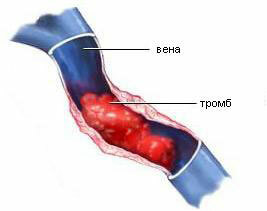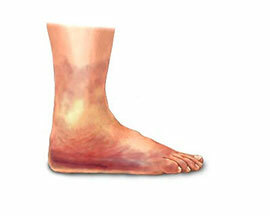 Post-thrombophlebitic syndrome is a chronic venous insufficiency of blood supply resulting from thrombosis.
Post-thrombophlebitic syndrome is a chronic venous insufficiency of blood supply resulting from thrombosis.
Most often this diagnosis is given to patients aged 25-50 years, it is more common among female patients. This is because the health of women is affected by a greater number of factors that may contribute to the onset of this syndrome, such as:
- pregnancy;
- the process of delivery;
- sedentary lifestyle and others.
The disease does not occur as often, on average, it does not occur more than 5% of people.
Often, this disease occurs after several years after the thrombosis has been cured. The lumen in the veins in which the thrombus was located becomes narrower, because of this the blood flow is disturbed, the affected area swells.
Symptoms that cause disease should not be ignored. On the contrary, it is desirable to begin treatment as early as possible. Post-thrombophlebitic syndrome can lead to severe swelling, as a consequence of the trauma the patient receives, heal very hard and can develop into ulcers, which are unpleasant and quite serious complications of the disease.
 Post-thrombophlebitic symptom causes the following symptoms:
Post-thrombophlebitic symptom causes the following symptoms:
- Edema of those areas that are affected by the syndrome. For example, postthrombophlebitic syndrome of the lower extremities causes swelling of the legs, in a more severe case - and thighs. Usually, swelling becomes stronger towards evening and decreases in the morning. Constant edema leads to a change in the structure of the skin and its densification and coarsening.
- The affected area hurts and burns, but when walking this feeling decreases.
- On the affected leg, there are pigmented spots, in consequence they can develop into more serious diseases, for example, eczema.
Symptoms are difficult to distinguish from thrombosis symptoms in order to distinguish between these two diseases, it is necessary to perform special studies of veins, such as duplex scanning of .
After the examination, the doctor can choose the right treatment, taking into account the course of the disease and the physiological characteristics of each patient.
Treatment of postthrombophlebitic syndrome can be carried out by such methods as:
- massage;
- physiotherapy
- receiving specially selected medications;
- wearing special underwear that neutralizes blood stasis and normalizes blood circulation;
- if treatment does not bring relief, perform surgery.
Post-thrombophlebitic symptom difficult to treat, it is almost impossible to completely get rid of, you can only prevent complications and slow development.
Therefore, having a propensity for varicose veins, it is necessary to regularly check with a phlebologist, adhere to a healthy lifestyle, and control the food of .



